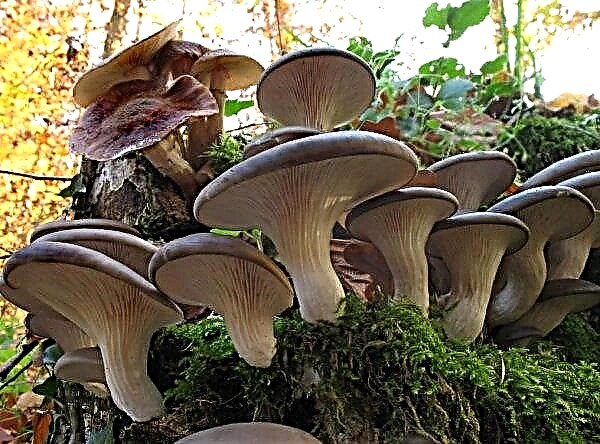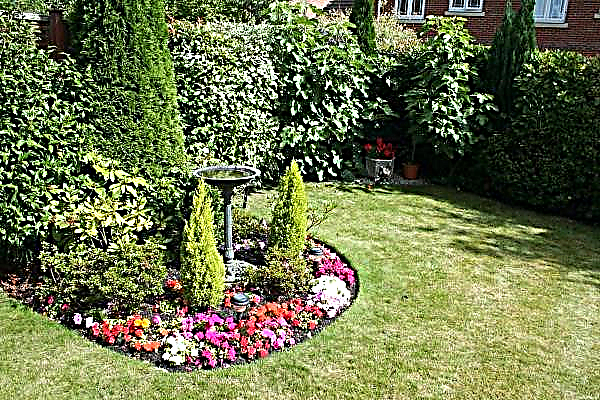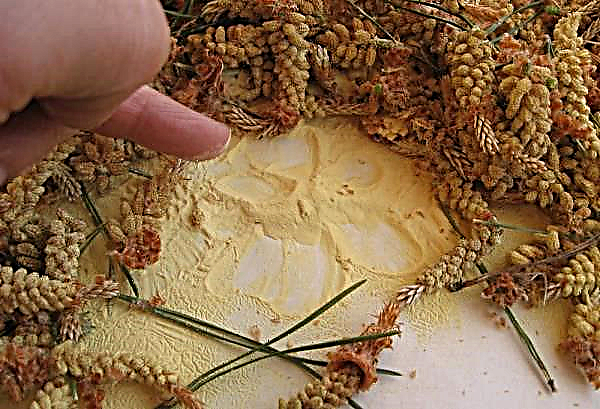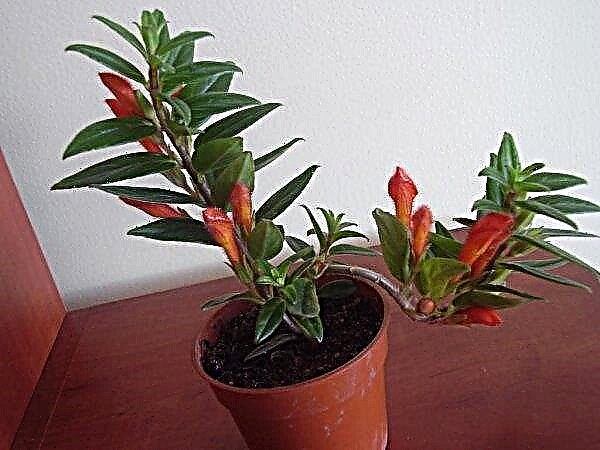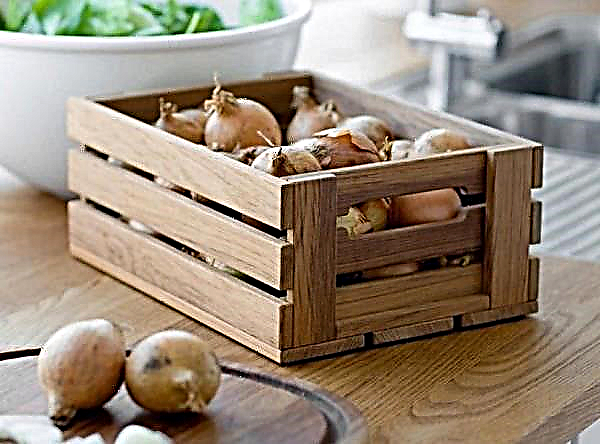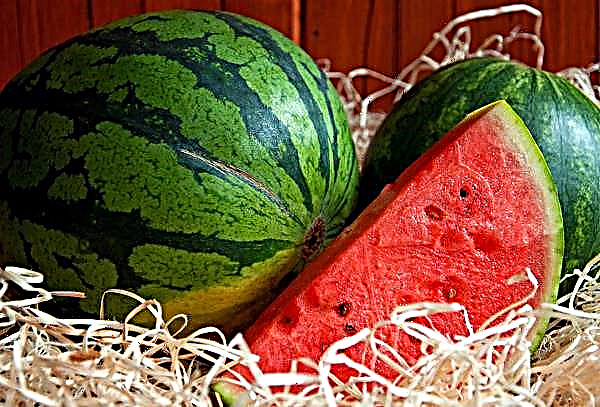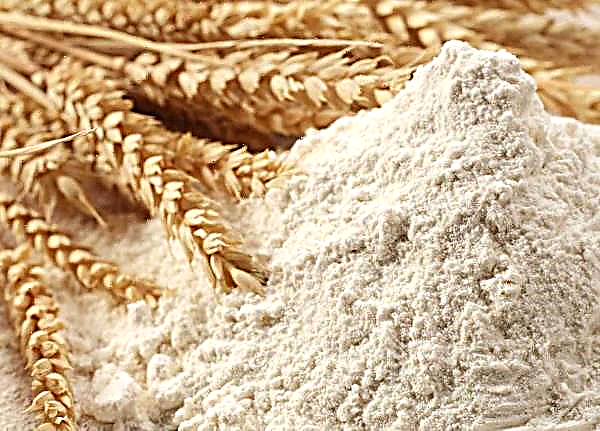The popularity of the tulip in the world, first of all, is evidenced by the presence of a huge number of species, varieties and forms. In the twentieth century. different researchers cited figures of the species range, counting from 40 to 418 varieties. Varieties are updated annually. The article will discuss the cultivation of one of them - called Barcelona.
Grade description
Acquaintance with Barcelona is worth starting with its description. This is a flower of Dutch selection, which is considered a Triumph class. The stem is strong and tall, reaching 60 cm. The bulb has a diameter of 10 cm. The buds of a plant are dense, large, up to 7 cm in size. They have the shape of a glass. Petals are bright pink. The flowers have a pleasant sweetish aroma.
Representatives of the cultivar Barcelona have a long flowering period - from late April to early May. In the middle lane, buds open in mid-May. A characteristic feature of the plant is the good tolerance of temperature differences. Tulip is suitable for growing in open and protected ground.
Growing Features
In order to successfully grow a flower, it is necessary to choose a suitable place for it, taking into account its requirements for lighting, heat and soil, observe planting technology and produce regular quality care. Mandatory measures for this plant are watering, top dressing, cultivation, weeding. Preventive procedures should also be taken to prevent diseases and harmful insects.
Did you know? Today, 92% of the international trade in tulip bulbs is controlled by the Netherlands. In the same country is 88% of all tulip plantations.
Landing rules
In order for tulips to maximize their decorative effect, they should be grown in an open area well lit by sunlight. At the same time, the place should be sheltered from drafts, northerly winds. It is important that moisture does not stagnate on it, since the described crop begins to hurt, rot, and dies at high humidity.
These flowers prefer the soil loamy, sandy, well-drained, with a neutral or low level of acidity. Before landing on the site for the purpose of fertilizer, it is necessary to introduce humus (10 kg / m²). Recommended planting period: September - early October. Rooting of tulips occurs at a temperature of + 5 ... + 7 ° С.

A few weeks before planting, you should prepare the holes. Their depth and width depend on the size of the bulbs. Large - should be deepened by 15 cm, small - by 7–10 cm. The distance between the holes should be 10–20 cm, depending on the size of the bulbs.
Important! A large role in the cultivation of tulips is played by the choice of place, taking into account predecessors. These flowers can not be planted after bulb crops, as this increases the risk of infection with diseases and harmful insects.
When planting in open ground, proceed as follows:
- At the bottom lay a mixture of turf with compost.
- Put a layer of sand 1-2 cm high on top.
- Arrange onions with the sharp end up.
- Sprinkle with a layer of earth.

The subtleties of care
Plants need to be watered regularly. It is important to establish a regime of irrigation in which the earth will be sufficiently moistened, but not flooded. It is recommended to water the plants 3 times during the growing season with a flow rate of 50 l / m². The soil should be moistened to a depth of 30–35 cm. Water should be taken at a warm temperature.
Like most plants, tulips need top dressing. In March, they can be fertilized with a urea solution, at the end of May - superphosphate. Fertilizers should be applied only to moistened soil, otherwise you can burn the roots.
Important! In one place, tulips can grow no more than four to five years. In the future, they need to be transplanted.
After each moistening and precipitation it is necessary to loosen the soil. This is necessary so that a dense crust does not form on its surface, and moisture and air easily pass to the bulbs. Another important procedure that should be carried out regularly is weeding. It is necessary to monitor the cleanliness of the site and remove weeds from the root, as they are carriers of diseases and pests.
For the winter, bulbs are usually dug up and stored for storage, first at a temperature of + 22 ° C, then at + 12 ° C. Return them to a permanent place in the spring. In regions with moderate winters, digging bulbs is optional. It is enough to mulch the soil with peat or compost.

Pests and diseases
Incorrect selection of the place, too deep burial of the bulbs during planting, lack of proper care and top dressing lead to the fact that plants weaken and become vulnerable to diseases and harmful insects. Tulips can be ill with about 30 types of diseases. The most common among them are the following:
| Disease name | Symptoms of infection | Prevention and treatment |
| Gray rot |
|
|
| White rot |
|
|
| Fusarium |
| The treatment is ineffective. Preventive measures should be observed: selection of high-quality planting material, proper storage of bulbs, soaking them for half an hour in a suspension of uzgen (0.2%) with Maxim. |
| Penicillosis |
| Etching of bulbs in a solution of potassium permanganate. |
| Variegation |
|
|
| Necrotic spotting |
| There is no cure for viral disease. It is necessary to remove and destroy the infected flowers. The soil on the site must be treated with a disinfectant and steamed. |

Of the harmful parasites for tulips, the most dangerous are such insects:
| Pest name | Symptoms of lesion | Prevention and treatment |
| Root onion tick |
|
|
| Onion grub | bulb damage |
|
| Purple scoop | stalk damage |
|
| Medvedka | damage to roots and stems |
|
| Wireworm | onion strokes |
|
| Aphid | deformation and death of plants |
|
| Nematode |
| Soaking the bulbs in water, heated to + 43 ° C, for 2.5 hours. |
| Slug | scraped tissue on a plant | Mechanical collection of insects. |
| Khrushchev | bulb damage | Conducting a deep digging of the soil on the site. |

Tulip in landscaping
Traditionally, these flowers are planted in flower beds. In one composition, there may be plants with inflorescences of the same color scheme or various shades. Often, tulips are grown in arrays, where other bulbous cultures are also placed, for example, daffodils, muscari, hyacinths.
The recommended use of the described decorative culture is in mixborders, discounts, on alpine hills, rocky gardens. In gardens, they can decorate the near-stem areas of trees (apple trees, cherries, plums) and shrubs.
- Such plants are good partners for tulips
- hosta and other perennials with large leaves;
- day-lily;
- phlox;
- geranium;
- almond steppe, mahonia holly, Japanese spirea and other ornamental shrubs;
- common lilac;
- narcissus;
- hyacinth.

So, it’s easy to grow Barcelona flowers. The main thing is to choose the right place for landing and carry out regular care. The tulip will be a wonderful decoration of any flower garden in the garden, on a summer cottage, in the park. Use it for cutting, for sale. When stored in a refrigerator and cold water, Barcelona Tulip can maintain its flowering appearance for a week.



